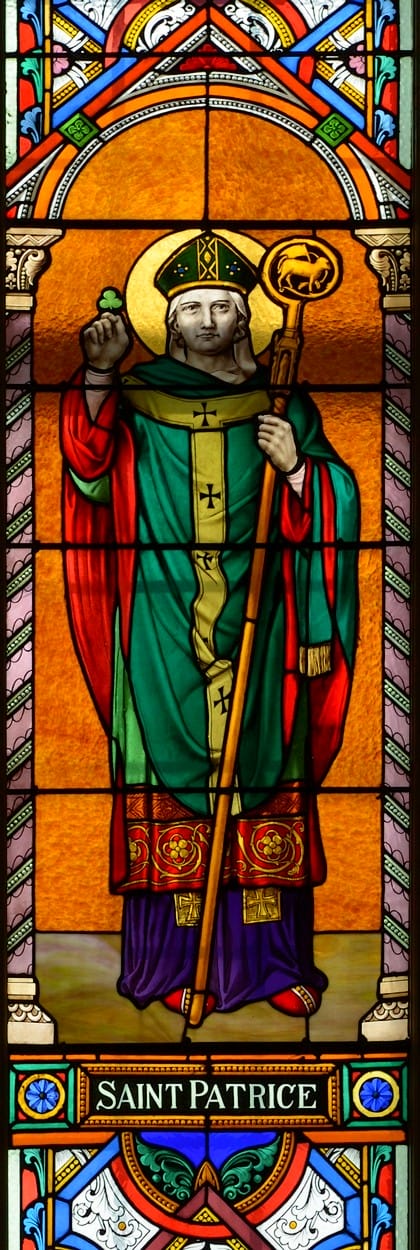
Henri Perdriau
1877-1950
 |
Born in Saint-Pierre-Montlimar in Vendée, France, he immigrated to Canada in 1895 at the age of 19 to avoid the military service under the Republican regime he hated. Henri Perdriau is intimately bound by one of his ancestors to Jacques Cathelineau, leader of the Vendée Insurrection and Generalissimo of the Catholic and Royal Army.
After a few years at the College des Sulpiciens, he worked as a journalist at the newspaper La Presse and he has a monthly column in Le Semeur, a french-canadian catholic association's journal. He contributed at Le Devoir and in several regional newspapers in Quebec.
In 1907, he was manager of the French house A. Vermonet from Reims which imported stained glass windows. Two years later, with this same Albert Vermonet and Alexandre Clave, both glass painters, he formed the Compagnie d'Art et d'Industries in Montreal. In 1914, he operated his studio under his own name on St-Viateur street. He initiated to stained glass arts the young and talented fresco painter Guido Nincheri.
In 1918, he teamed up with an Irish immigrant and glass importer named John Patrick O'Shea. Together, they produced a large number of windows until 1923. Henri Perdriau left to the United States after a decade only to work as a stained glass artisan.
In 1939, he was back in Montreal where he entered the Nocturnal Adoration. He died on February 16, 1950 at the age of 72. He is buried in the Benedictines cemetery of Saint-Benoît-du-Lac.
One can see in his works the presence of wild roses and fleur-de-lys.
 |
Le Devoir, July 1st, 1912 |
 |
Claude Grant |
Here are a few churches in Quebec and New Brunswick where one can find stained glass windows whose achievement is attributed to Henri Perdriau in association or not with O'Shea.
- The church St-Jean Baptiste, Montreal
- The cathedral St-François-Xavier, Chicoutimi
- The cathedral St-Charles-Borromée, Joliette
- The sanctuary of St-Sacrement, Montreal
- The former college Mont-Saint-Louis, Montreal
- The church Ste-Luce, Sainte-Luce-sur-Mer
- The library St-Sulpice, Montreal
- The church Saint-Enfant-Jésus, Montreal
- The cathedral St-Germain, Rimouski
- The church St-Paul of Bas Caraquet, NB
- The church St-Bernard, Fournier, Ontario
A Vitriolic Writer
In Woonsocket (Rhodes Island), Henri Perdriau joined in 1925 the Sentinellists, a Franco-American defense movement which caused some agitation in all New England. Elphege Daignault, a lawyer and the leader of the movement, rebelled against the financing of English-language schools with funds collected by the Catholic Church among the French-speaking majorities. He founded the newspaper La Sentinelle to mobilize the population. Henri Perdriau was an editor. It was a vindictive newspaper, constantly questioning the authority of the Bishop of Providence diocese, the Irish-American Rev. William A. Hickey. The newspaper was banned from publishing but it came back under several names: La Bataille, La Vérité or La Défense. Henri Perdriau wrote under the pseudonym «Étienne Lemoyne».
The Bishop was brought to the Court. On November 1st, 1927 in Providence (R.I.), the Superior Court refused to hear the case of Daignault, claiming it was a matter of internal management of the Church. Elphege Daignault went to plead before the Vatican in Rome.
But events turned against him. In Rome, Daignault learnt that he, Perdriau and 62 of their supporters were excommunicated from the Catholic Church, a sentence of the most shameful for the time. The movement lost its last popular support it had in Quebec when in 1929, Henri Bourassa, founder of the newspaper Le Devoir, published a stunning editorial. Bourassa, himself a nationalist, condemned loudly the Sentinellists movement, which had placed «the defence of their language above that of their faith».